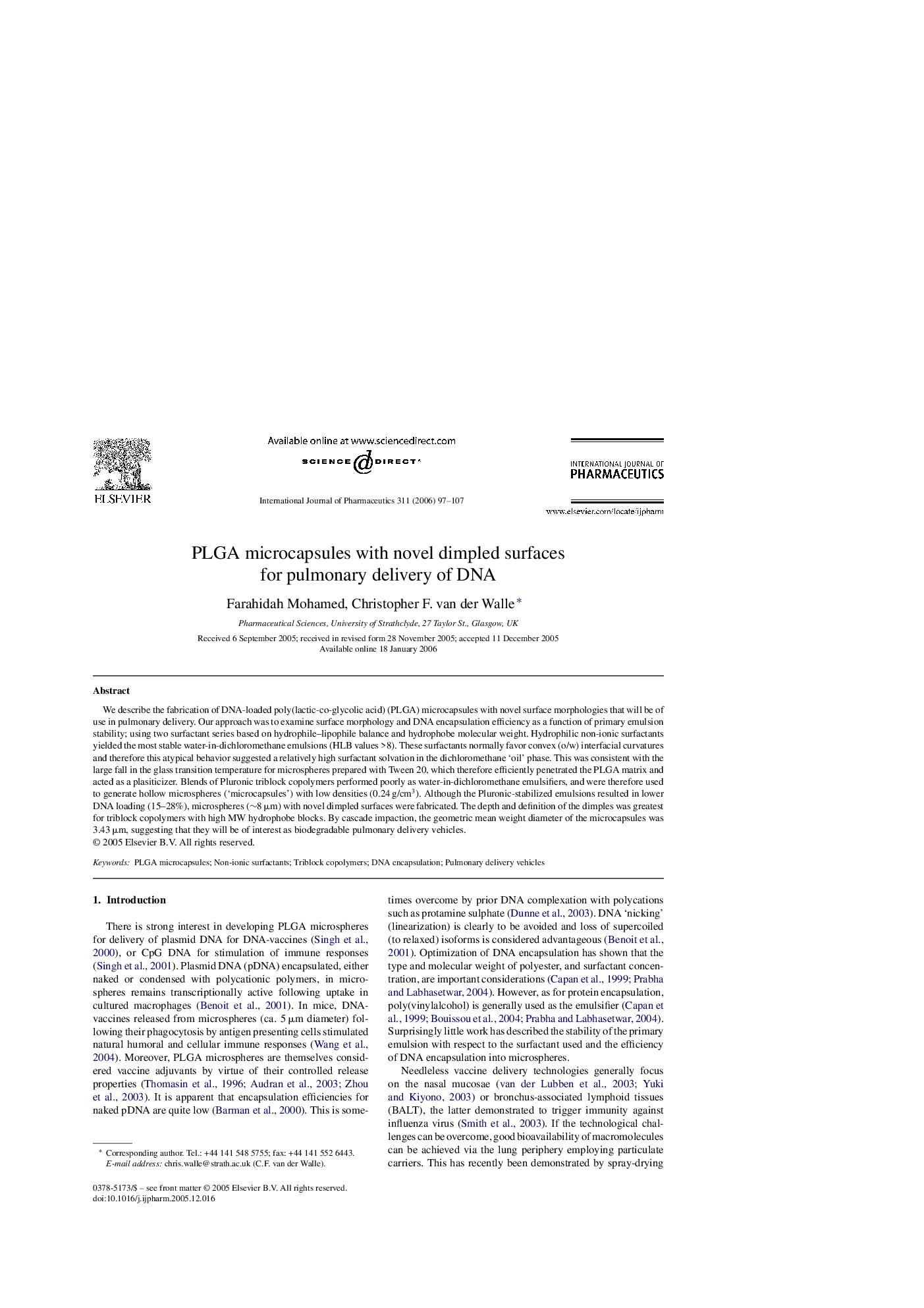| Article ID | Journal | Published Year | Pages | File Type |
|---|---|---|---|---|
| 2507062 | International Journal of Pharmaceutics | 2006 | 11 Pages |
We describe the fabrication of DNA-loaded poly(lactic-co-glycolic acid) (PLGA) microcapsules with novel surface morphologies that will be of use in pulmonary delivery. Our approach was to examine surface morphology and DNA encapsulation efficiency as a function of primary emulsion stability; using two surfactant series based on hydrophile–lipophile balance and hydrophobe molecular weight. Hydrophilic non-ionic surfactants yielded the most stable water-in-dichloromethane emulsions (HLB values >8). These surfactants normally favor convex (o/w) interfacial curvatures and therefore this atypical behavior suggested a relatively high surfactant solvation in the dichloromethane ‘oil’ phase. This was consistent with the large fall in the glass transition temperature for microspheres prepared with Tween 20, which therefore efficiently penetrated the PLGA matrix and acted as a plasiticizer. Blends of Pluronic triblock copolymers performed poorly as water-in-dichloromethane emulsifiers, and were therefore used to generate hollow microspheres (‘microcapsules’) with low densities (0.24 g/cm3). Although the Pluronic-stabilized emulsions resulted in lower DNA loading (15–28%), microspheres (∼8 μm) with novel dimpled surfaces were fabricated. The depth and definition of the dimples was greatest for triblock copolymers with high MW hydrophobe blocks. By cascade impaction, the geometric mean weight diameter of the microcapsules was 3.43 μm, suggesting that they will be of interest as biodegradable pulmonary delivery vehicles.
